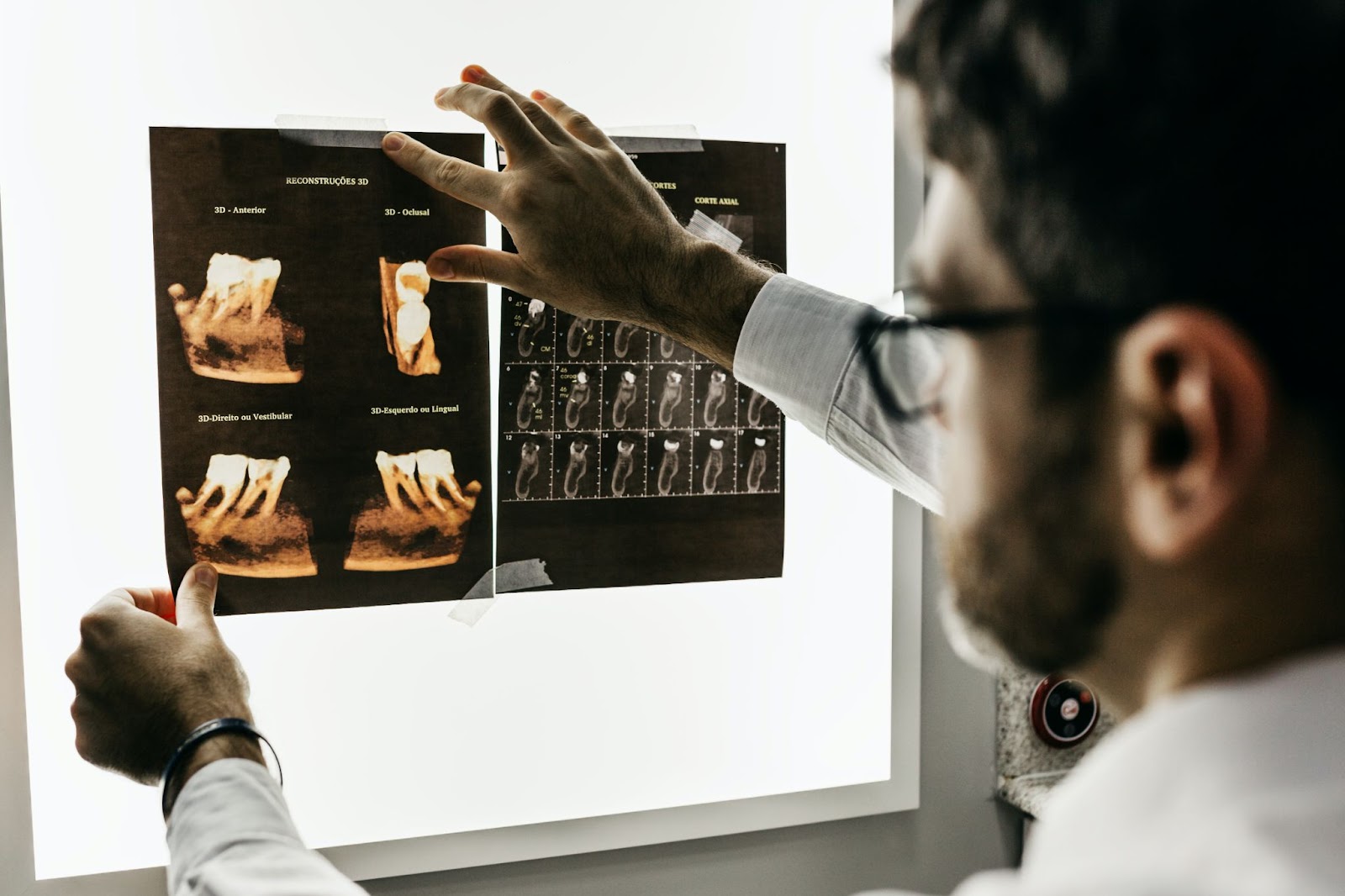What Is The Treatment For Gum Disease

Having bleeding gums and sensitive or loose teeth is never normal. Gum disease is often known as the ‘silent killer’ of teeth as it is not always painful. , Gum disease is a leading cause of tooth loss and has been linked to other medical conditions such as stroke, heart disease and diabeties. If you are wondering- “What is the treatment for gum disease?”, the answers and possible treatments are explained here for you so you can be pain-free and get back to sharing that stunning smile with the world.
What Is Periodontitis, Also Known As Gum Disease?
In Australia, gum disease is common, with 3 in every 10 adults having moderate to severe gum disease. Periodontitis is a gum disease with two stages. Gingivitis occurs in the early stage of gum disease; plaque (containing bacteria) builds up in the areas between the teeth. Inflamed gums and bleeding during tooth brushing are common. The good news: This stage has no irreversible bone damage.
Periodontitis is the second and severe stage of Gum Disease. Inflammation of the gums affects the bone holding the teeth in place. When untreated, gum disease erodes the attachment that holds the tooth in the bone, leaving a ‘pocket’ that collects more bacteria. This collection of bacteria causes permanent bone loss in the jaw, allowing teeth to loosen and be lost.
What Causes Gum Disease?
The primary cause of gum disease is bacterial plaque and tartar. The sticky white film, referred to as plaque, contains bacteria that form on your teeth. If the plaque is left undisturbed (due to it being missed during day to day brushing), it hardens to become tartar. Tartar is a hardened bacterial growth that’s strongly adhered to the tooth root, kind of like barnacles on the bottom of a boat. Plaque and calculus builds up below and above the gum line, causing irritation and infection of the gum and bone. Brushing alone is not able to remove the hard tartar and sticky plaque.
Common causes of gum disease include:
- Poor oral hygiene.
- Dental fixtures. Fillings, partial dentures, bridges, and crowns build up plaque more than healthy teeth.
- Illness and other conditions (eg/diabetes, pregnancy)
- Smoking.
What Are the Symptoms of Gum Disease?
The signs and symptoms of gum disease vary. Generally, patients report the following:
- Bad breath
- Bleeding gums when brushing teeth
- Gum inflammation
- Receding gums
- Loose teeth
- Painful chewing
- Sensitive teeth or gum areas
- Tooth Loss
How Is Gum Disease Treated?
Gum disease treatments clean out bacteria from the pockets around the teeth and prevent further destruction of bone and tissue. Depending on the severity of the gum disease different treatments will be applied by your dentist.
Deep Cleaning
In less advanced cases of periodontitis, treating gum disease may involve less invasive procedures such as:
- Scaling Treatment: This gum disease treatment cleans between your gums and teeth, removing tartar and bacteria from the tooth surface and below your gums. Treatment types by a dental professional include the use of cleaning instruments, ultrasonic devices, and or lasers.
- Root planing. This treatment smooths the root surfaces, discouraging further buildup of tartar and bacteria.
Antibiotic Medications
A dentist will prescribe topical or oral antibiotics to control the oral bacterial infection. Topical antibiotics include antibiotic mouth rinses or inserting a gel containing antibiotics after a deep cleaning.
Oral antibiotics include antibacterial medicines prescribed by your dental professional that reduce inflammation and block the protein collagenase. This protein destroys the connective tissue and bone between gums, teeth, and bones.
Surgery
Advanced periodontitis surgical treatments include:
- Flap surgery (Or pocket reduction surgery).Small incisions made in your gum expose the roots for more effective scaling and root planing. When bone loss is evident, recontouring of the bone occurs, and the gum is sutured back in place.
- Soft tissue grafts. This procedure reinforces gums by removing a small amount of tissue from the roof of your mouth (palate) and attaching it to the gum area. This procedure reduces further gum recession and covers any exposed roots.
- Bone grafting.If periodontitis has destroyed the bone surrounding the root, it requires implanting a graft composed of small fragments of your own bone. This bone graft holds your tooth in place and allows for the regrowth of natural bone.
- Guided tissue regeneration.An alternative to grafting in the bone destroyed by bacteria. Your dentist implants a bio-compatible medical fabric between the existing bone and your tooth. The material allows new bone growth by preventing unwanted tissue from entering the healing area.
- Tissue-stimulating proteins.A special gel is applied to the root of a diseased tooth containing the same proteins in the developing tooth enamel. This gel stimulates healthy bone and tissue growth.
Summary
Gum disease is a severe disease, but it is treatable. Why be in pain, not be able to chew certain types of food or have a painful mouth? Reclaim your smile and confidence today. Our dentists at Whitehorse Dental are gentle, caring, and passionate about taking care of you and your teeth. We specialise in preventative, family, children’s dentistry and Chinese speaking patients. Contact us today to discuss what treatment(s) for gum disease is proper for you.

